Abstract
Pecks on an operant key were reinforced on either multiple variable-interval variable-interval or multiple variable-interval extinction schedules of reinforcement. The stimuli that signalled the multiple-schedule components were located on a second key (signal key), and a changeover delay prevented reinforcement of signal key-peck—operant key-peck sequences. No behavioral contrast was observed on the operant key, and appreciable responding to the signal key occurred during the variable-interval component of the multiple variable-interval extinction procedure. Peck durations on the signal key were markedly shorter than peck durations on the operant key. Moreover, most responses on the signal key occurred just after the multiple-schedule components changed. These data support an account of behavioral contrast in terms of the summation of pecks that are separately controlled by stimulus-reinforcer and response-reinforcer dependencies, and suggest that the stimulus-reinforcer dependency is responsible primarily for local contrast. In addition, the data suggest that pecks that are controlled by these two dependencies may belong to topographically different classes.
Keywords: behavioral contrast, local contrast, stimulus-reinforcer dependency, elicited pecking, response duration, multiple schedules, signal key, key peck, pigeons
Full text
PDF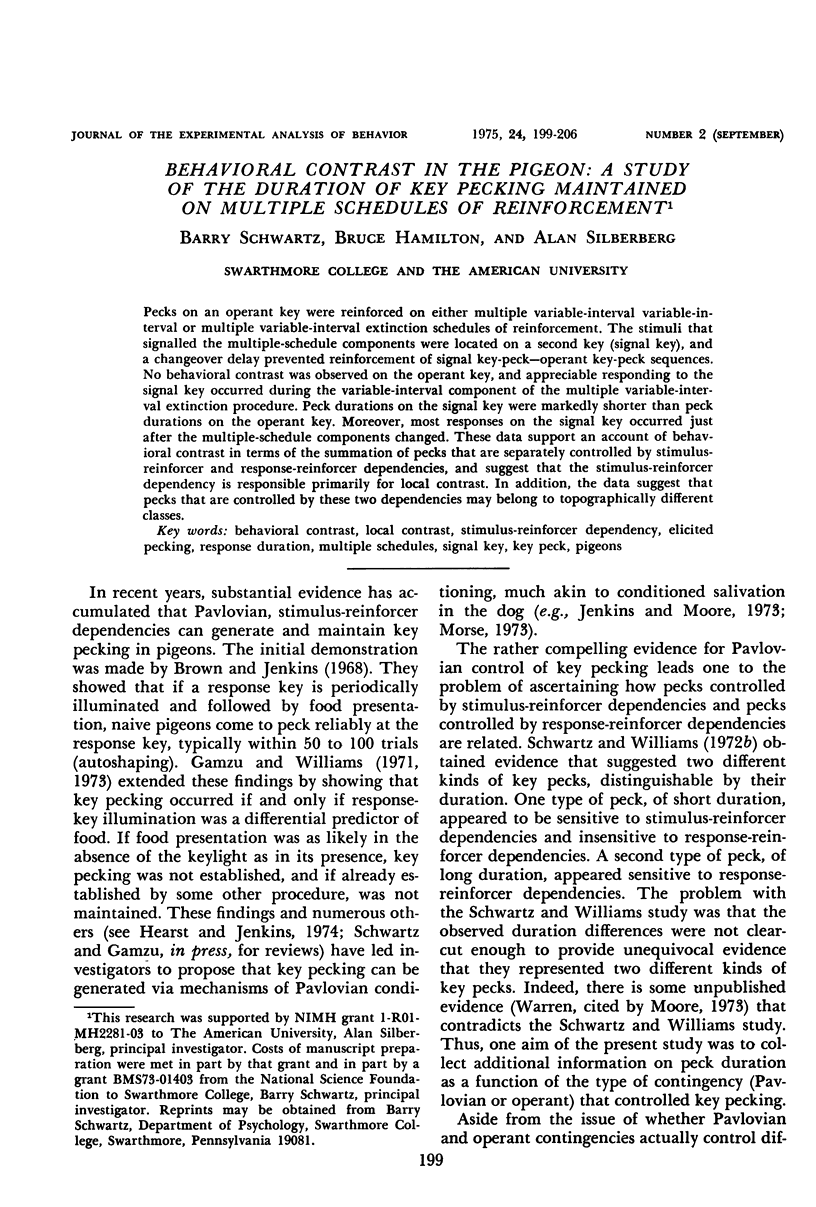
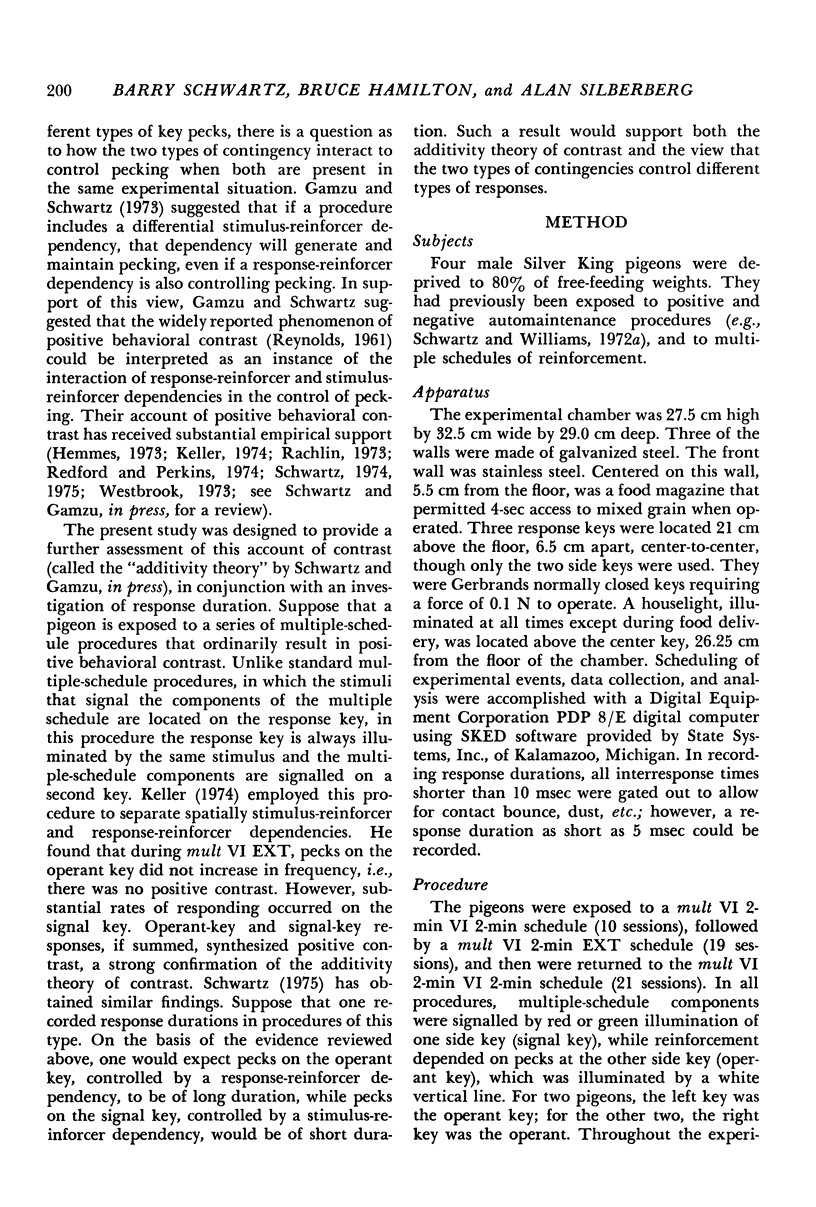
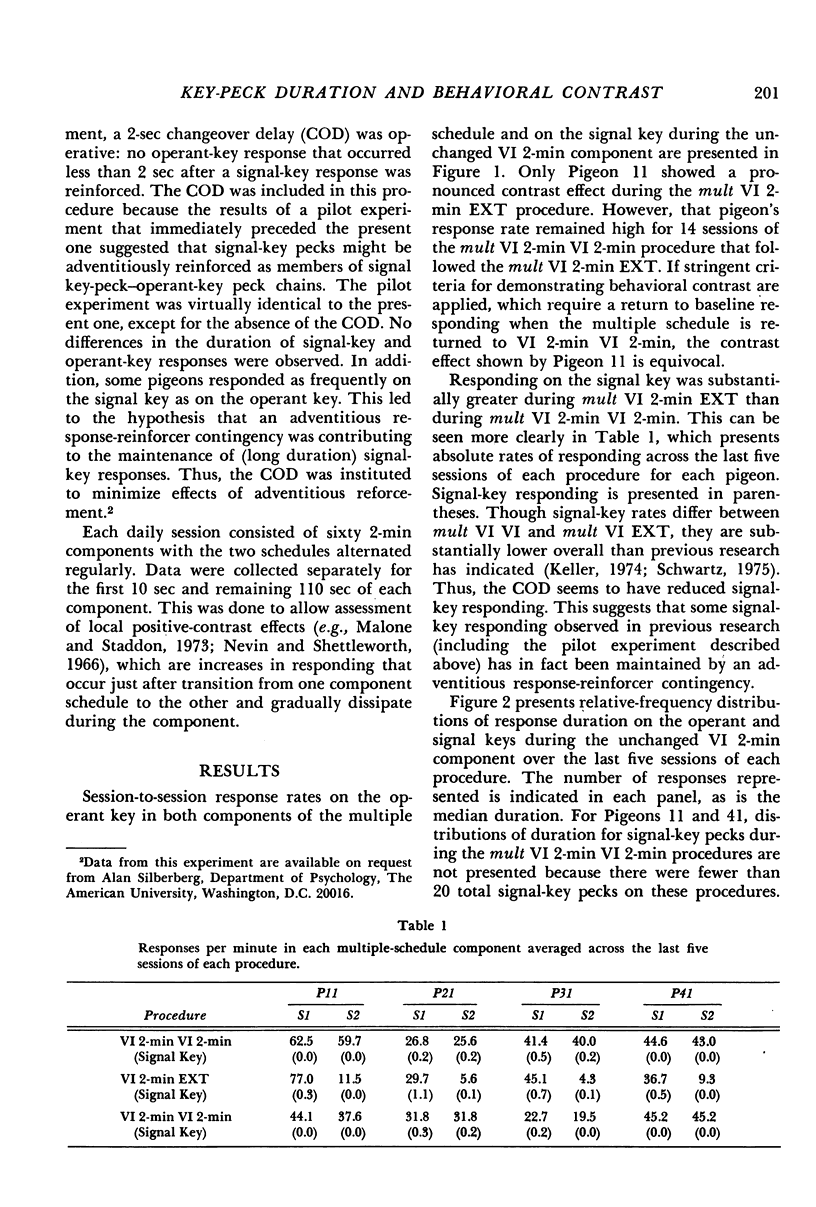
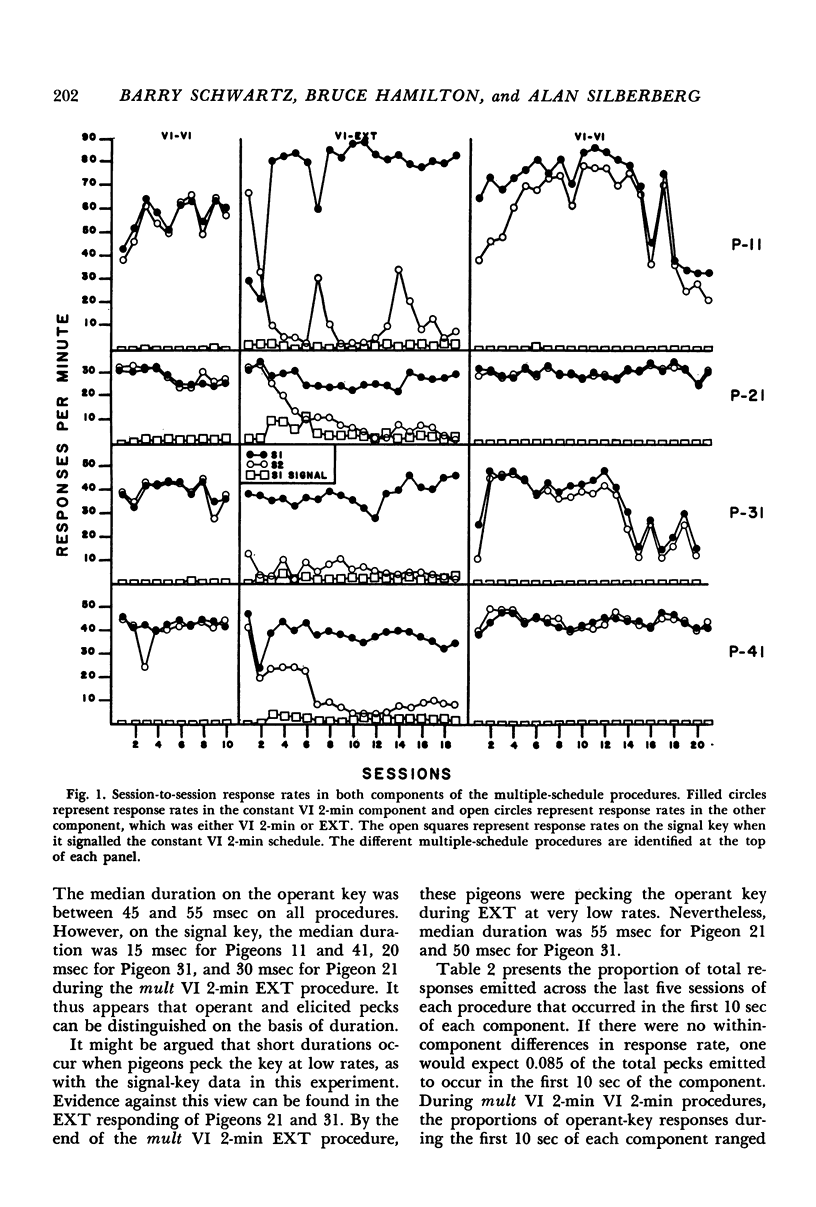
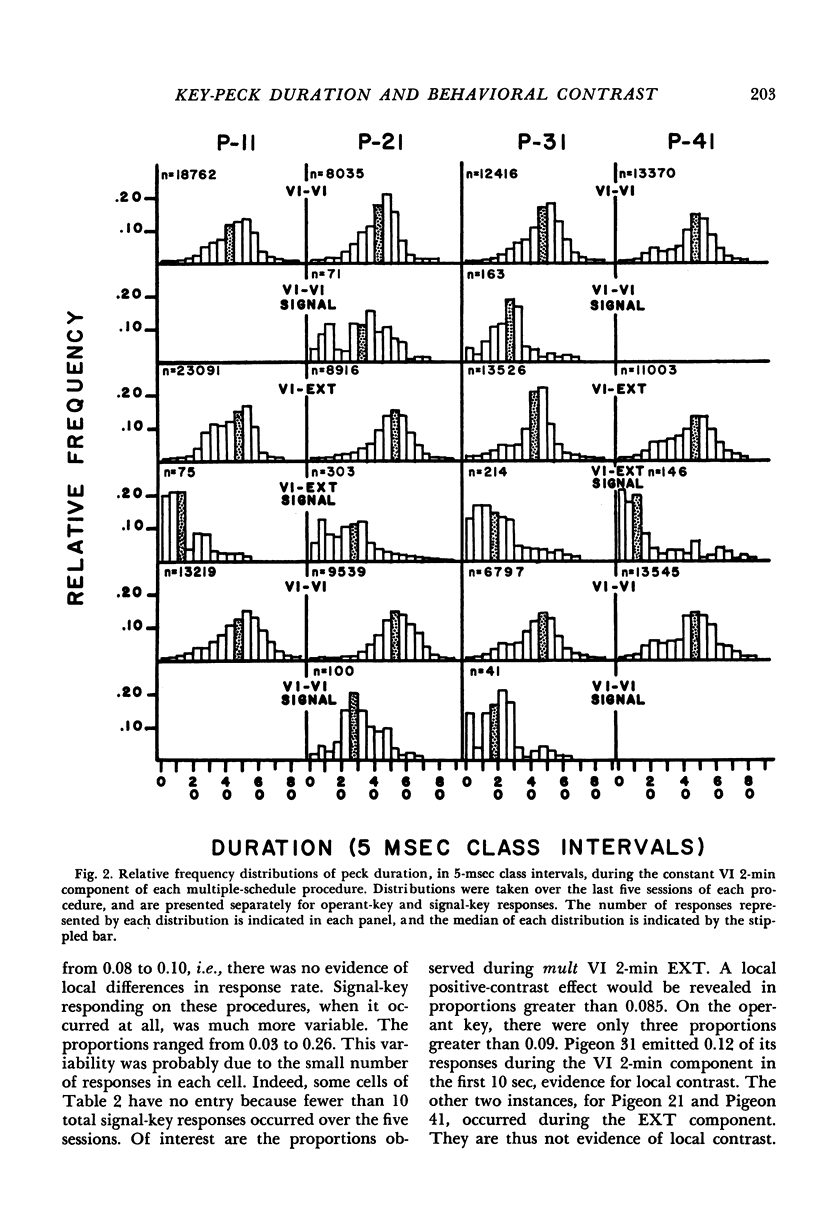
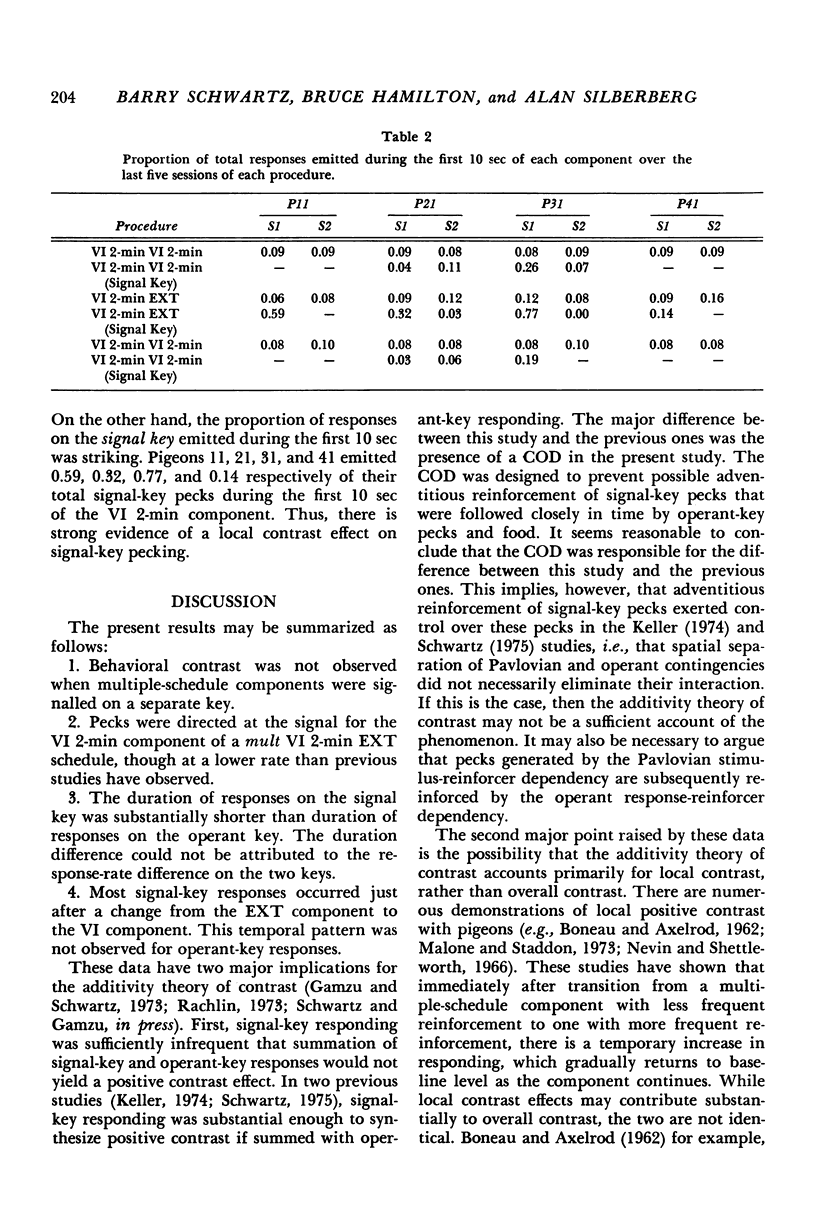
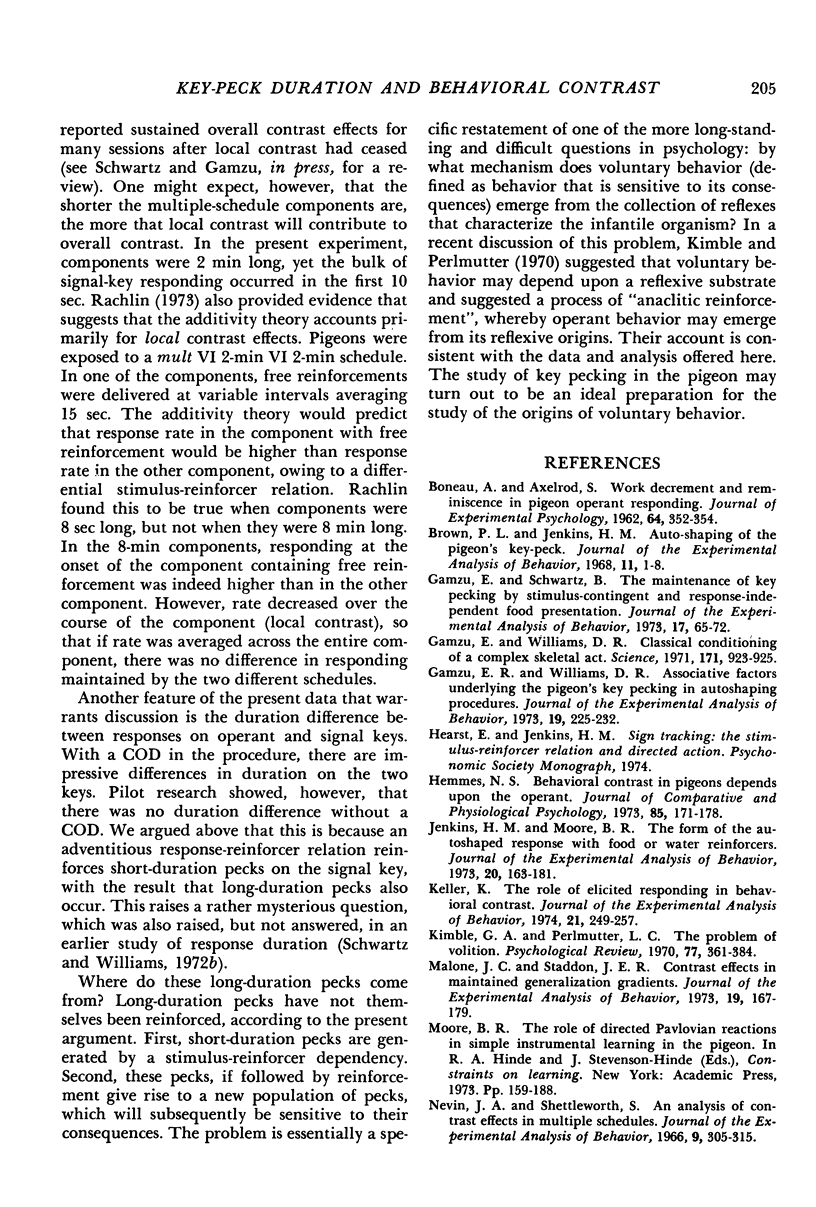
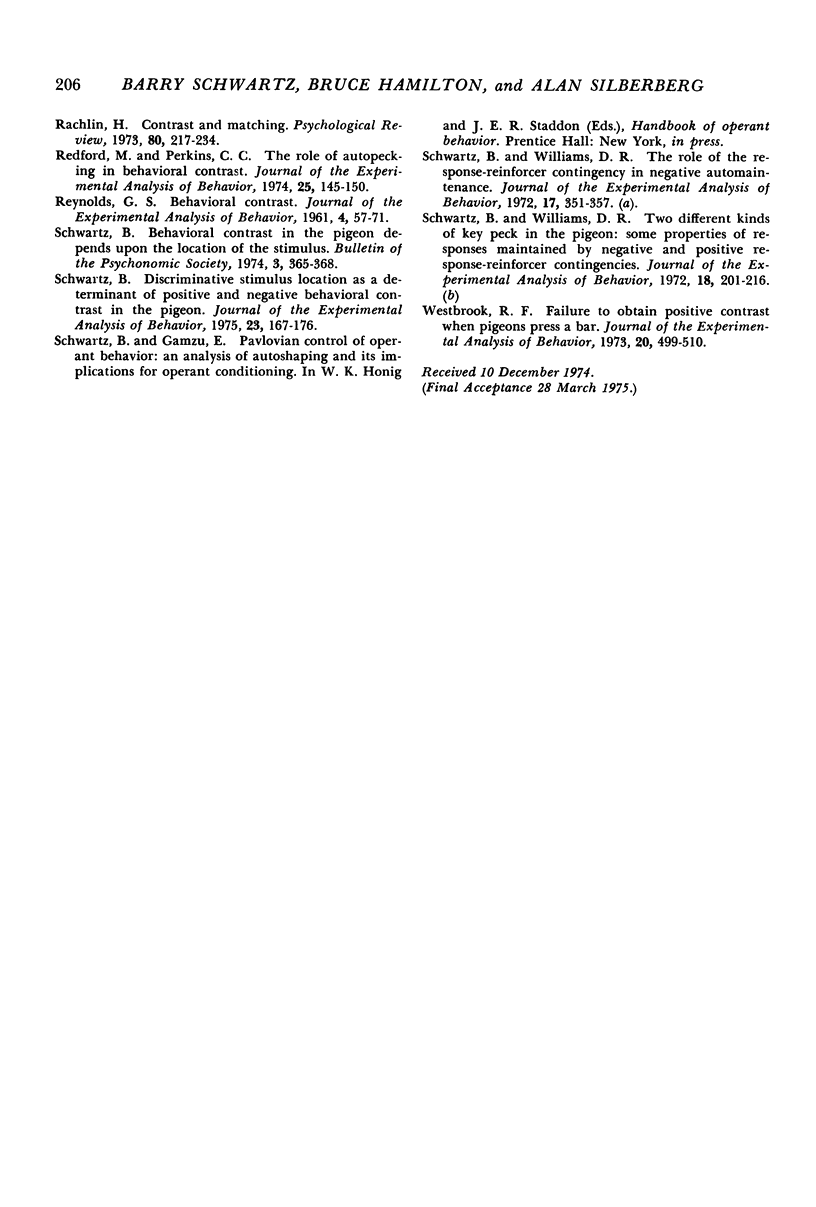
Selected References
These references are in PubMed. This may not be the complete list of references from this article.
- BONEAU C. A., AXELROD S. Work decrement and reminiscence in pigeon operant responding. J Exp Psychol. 1962 Oct;64:352–354. doi: 10.1037/h0047944. [DOI] [PubMed] [Google Scholar]
- Brown P. L., Jenkins H. M. Auto-shaping of the pigeon's key-peck. J Exp Anal Behav. 1968 Jan;11(1):1–8. doi: 10.1901/jeab.1968.11-1. [DOI] [PMC free article] [PubMed] [Google Scholar]
- Gamzu E. R., Williams D. R. Associative factors underlying the pigeon's key pecking in auto-shaping procedures. J Exp Anal Behav. 1973 Mar;19(2):225–232. doi: 10.1901/jeab.1973.19-225. [DOI] [PMC free article] [PubMed] [Google Scholar]
- Gamzu E., Schwartz B. The maintenance of key pecking by stimulus-contingent and response-independent food presentation. J Exp Anal Behav. 1973 Jan;19(1):65–72. doi: 10.1901/jeab.1973.19-65. [DOI] [PMC free article] [PubMed] [Google Scholar]
- Gamzu E., Williams D. R. Classical conditioning of a complex skeletal response. Science. 1971 Mar 5;171(3974):923–925. doi: 10.1126/science.171.3974.923. [DOI] [PubMed] [Google Scholar]
- Hemmes N. S. Behavioral contrast in pigeons depends upon the operant. J Comp Physiol Psychol. 1973 Oct;85(1):171–178. doi: 10.1037/h0034883. [DOI] [PubMed] [Google Scholar]
- Jenkins H. M., Moore B. R. The form of the auto-shaped response with food or water reinforcers. J Exp Anal Behav. 1973 Sep;20(2):163–181. doi: 10.1901/jeab.1973.20-163. [DOI] [PMC free article] [PubMed] [Google Scholar]
- Keller K. The role of elicited responding in behavioral contrast. J Exp Anal Behav. 1974 Mar;21(2):249–257. doi: 10.1901/jeab.1974.21-249. [DOI] [PMC free article] [PubMed] [Google Scholar]
- Kimble G. A., Perlmuter L. C. The problem of volition. Psychol Rev. 1970 Sep;77(5):361–384. doi: 10.1037/h0029782. [DOI] [PubMed] [Google Scholar]
- Malone J. C., Staddon J. E. Contrast effects in maintained generalization gradients. J Exp Anal Behav. 1973 Jan;19(1):167–179. doi: 10.1901/jeab.1973.19-167. [DOI] [PMC free article] [PubMed] [Google Scholar]
- Nevin J. A., Shettleworth S. J. An analysis of contrast effects in multiple schedules. J Exp Anal Behav. 1966 Jul;9(4):305–315. doi: 10.1901/jeab.1966.9-305. [DOI] [PMC free article] [PubMed] [Google Scholar]
- REYNOLDS G. S. Behavioral contrast. J Exp Anal Behav. 1961 Jan;4:57–71. doi: 10.1901/jeab.1961.4-57. [DOI] [PMC free article] [PubMed] [Google Scholar]
- Redford M. E., Perkins C. C. The role of autopecking in behavioral contrast. J Exp Anal Behav. 1974 Jan;21(1):145–150. doi: 10.1901/jeab.1974.21-145. [DOI] [PMC free article] [PubMed] [Google Scholar]
- Schwartz B. Discriminative stimulus location as a determinant of positive and negative behavioral contrast in the pigeon. J Exp Anal Behav. 1975 Mar;23(2):167–176. doi: 10.1901/jeab.1975.23-167. [DOI] [PMC free article] [PubMed] [Google Scholar]
- Schwartz B., Williams D. R. The role of the response-reinforcer contingency in negative automaintenance. J Exp Anal Behav. 1972 May;17(3):351–357. doi: 10.1901/jeab.1972.17-351. [DOI] [PMC free article] [PubMed] [Google Scholar]
- Schwartz B., Williams D. R. Two different kinds of key peck in the pigeon: some properties of responses maintained by negative and positive response-reinforcer contingencies. J Exp Anal Behav. 1972 Sep;18(2):201–216. doi: 10.1901/jeab.1972.18-201. [DOI] [PMC free article] [PubMed] [Google Scholar]
- Westbrook R. F. Failure to obtain positive contrast when pigeons press a bar. J Exp Anal Behav. 1973 Nov;20(3):499–510. doi: 10.1901/jeab.1973.20-499. [DOI] [PMC free article] [PubMed] [Google Scholar]


